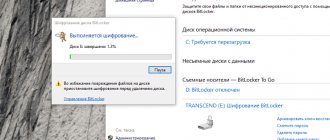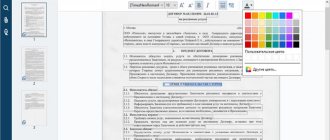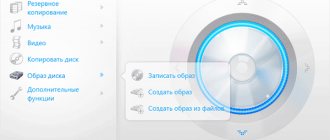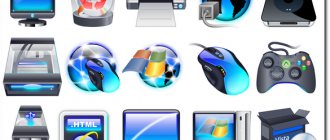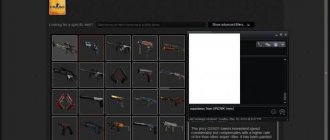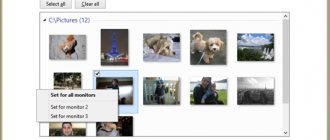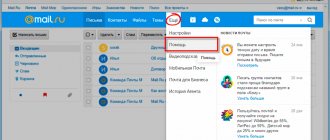1C programs for automating various areas of business
For example, a novice entrepreneur who has already resolved the issue of filing tax reports understands that he also needs a management tool for every day, which will allow him to evaluate the entire business picture. That is, he will need a program for the purposes of management accounting and analysis, inventory control, orders to suppliers, CRM, etc. Most likely, he will be suitable for the inexpensive 1C: Managing Our Company program, which is also serviced free of charge in the basic version, and can be easily upgraded to an advanced version if the business grows.
At the same time, the director of a large enterprise or holding, thinking about an effective management tool, has the same, only more ambitious goals. Therefore, he needs a global program that can cover all business processes in an enterprise, from receiving reports to evaluating investment projects, while being equipped with a powerful “engine” that can support the simultaneous work of hundreds or even thousands of users. For complex implementations, we offer development flagships for 1C - 1C:ERP Enterprise Management 2, its version for implementation in holdings or the 1C:Corporation package, which includes both solutions, as well as the 1C:Document Flow program and the CORP version of the 1C:Salary and Personnel Management program.
While the goals are similar, the automation tasks in these situations will be very different. The owner of a small business must decide on the basic minimum of processes that he wants to automate, voice his wishes to the seller of 1C solutions, and, if the proposed solution suits him, purchase the program, configure it and start working in it with the support of the seller.
Complex automation of large enterprises requires a huge amount of preparatory work. Analysis of existing processes at the enterprise, their description, development of a plan for their optimization, preparation of a methodology for their automation - this is only a small part of the work preceding the implementation of the program (and additional improvements will be required to take into account the individual characteristics of the organization). Therefore, the most important task of complex automation will be not so much choosing a solution as choosing a team that could successfully implement such a project.
In this article we will try to cover all the important concepts related to the selection of 1C programs, their implementation and operation. Getting to know them will make it easy for any potential user to navigate the 1C world, including when choosing a program. Let's start with the basics, that is, with the concepts of “platform” and “configuration”.
Fig. 1 1C for business automation
Platform and configuration - what's the difference?
1C:Enterprise is the name of the 1C platform on the basis of which all application solutions operate. In essence, only developers deal with the platform, and the average user does not encounter it as a separate element, since 1C:Enterprise is delivered as part of the program in the form of a regular .exe file. The modern version of 1C:Enterprise is 8.3. It is the basis for both solutions developed to automate a certain area of activity or accounting, such as 1C: Accounting, 1C: Salary and HR Management, 1C: Retail, as well as complex ones - 1C: Holding Management and 1C: ERP.
The 1C:Enterprise platform is a set of software tools necessary for database administration, installation on a PC, updating, and also for developing completely new functionality. By purchasing a standard software product developed or certified by 1C, the user receives along with it the 1C:Enterprise platform, even if it has already been installed on a PC with another 1C program.
Information materials of the Training version 1C
In the Information Materials , reference materials are available for various sections: Administrator's Guide, Developer's Guide, Developer's Practical Guide and others.
Administrator's Guide. This section describes all issues related to the administration of 1C: Enterprise information bases.
Using the navigation panel, you can move through sections (chapters), save to favorites, etc. This section is also available on the ITS website.
The Developer's Practical Guide section presents the book 1C: Enterprise 8.3. Practical guide for developers. Examples and typical techniques , in which the creation of an application solution is discussed using examples, the structure of objects, their purpose and use is shown.
The book is divided into blocks - Lessons , which contain both practical tasks and theoretical information. There are 28 lessons in total in the book. After each lesson, test questions are offered for self-testing.
Introduction to Mobile Application Development section introduces the technology - the mobile platform. It examines an example of creating a small mobile application related to the use of a mobile platform - the issues of preparing a mobile device (smartphone, tablet PC), installing the developer platform are considered, and the capabilities of the platform are described. Each section contains many pictures and explanations. This is an electronic analogue of the publication Introduction to the development of mobile applications on the 1C Enterprise 8 platform.
By going to section 1C Accounting 8. Educational version , we will see a reference database for working with this program. This is a kind of guide to the program, which describes all sections of accounting, with examples of documents and explanations.
The section Methodological support for IT specialists contains reference information for developers and administrators of 1C Enterprise 8, manuals, additional development tools - processing, libraries, various instructions, descriptions of problems and ways to solve them, etc.
Developer's Glossary. This is another way to organize a navigation page, viewing which you can easily find the material you need. It contains terms and abbreviations that are encountered when working, developing application solutions in the 1C Enterprise system and when administering information databases.
In the glossary sections, you can read information, find useful links on the 1C knowledge base, documentation, teaching materials, download useful reports, processing, etc.
Follow the link in the 1C Enterprise 8 Architecture to go to the 1C Enterprise Dictionary. Sections of this section are also grouped by letters of the alphabet and contain general information about the 1C Enterprise . They are based on the brochure 1C Enterprise Architecture .
Reader support forum. The link takes us to the forum. Here you can ask a question, get recommendations for working with the 1C program, download the necessary processing, etc.
See also:
- How to transfer 1C 8.3 to another computer while maintaining the license
- Uploading to 1C from xml: how to upload data from 1C 8.3 and load into 1C 8.3
- Additional details and additional information in 1C
- Transition from the basic version to PROF 1C 8.3
- Printing price tags in 1C
If you are not yet a subscriber to the BukhExpert8 system:
Activate demo access for free →
or
Subscribe to Rubricator →
After subscribing, you will have access to all materials on 1C Accounting, recordings of supporting broadcasts, and you will be able to ask any questions about 1C.
Did the article help?
Get another secret bonus and full access to the BukhExpert8 help system for 14 days free of charge
Related publications
- Backup 1C 8.3 Accounting 3.0 To reduce the risk of data loss in the 1C 8.3 information base, it is recommended...
- How to restore a 1C 8.3 database from a backup copy If the 1C 8.3 information base is damaged, errors occur, failure...
- How to upload a 1C 8.3 database to a flash drive Sometimes situations arise when you need to make a copy of the 1C infobase...
- Setting up user rights in 1C 8.3 When working in 1C, it is important to correctly create users and set...
Typical and non-standard configurations
At the time of purchase, any 1C configuration (the same as a program, solution, system, software product, etc.) is standard.
They try to preserve it in this form, since it is not necessary to involve an IT specialist to update the standard configuration when a new release with additions and corrections is released. When the database is connected to the Internet, updates can even be installed automatically. This is very important for programs that maintain regulated accounting (for example, the “whole family” of 1C: Accounting programs), since their updates reflect innovations in legislation, and skipping such points in tax and accounting is, to put it mildly, undesirable.
Setting up 1C:Enterprise
After installing the 1C:Enterprise and the necessary configurations, you can launch the program from a shortcut on your desktop. Probably the first thing we will see after launch is a notification that the list of infobases is empty , and a proposal to add an infobase to the list . But we will not rush while we click on the No to carry out preliminary configuration of the program.
We will be taken to the main window of the 1C program. Click on the Settings
The 1C:Enterprise settings window will open in front of us. In the current article, we will touch upon only one item, namely, Directories of configuration and update templates . There are currently no defined paths in this setup, we need to fix that. Click on the green button with a plus sign
At this stage, a Windows Explorer window will open, in which we need to specify the directory with the stored database templates. We do not indicate an arbitrary folder, but precisely the one in which the configuration files were installed, the very path that we remembered or wrote down. In our example, this is the following directory:
C:\Users\Apres\AppData\Roaming\1C\1cv8\tmplts
A problem that may arise is that the AppData is hidden. To access it you can use one of two ways:
- You can enable the display of hidden files and folders in Windows Explorer; we talked about how to do this in the article Hiding files in Windows. We hide confidential information , let's not dwell on this again.
- %appdata% in the top address line and press the Enter , the following folder will immediately open in front of us: C:\Users\Apres\AppData\Roaming\
We just have to go to the directory \1C\1cv8\tmplts\
After we have got into the tmplts , click on the Select folder in the lower right corner
For now we will not make additional settings, so in the parameters window click on the OK . Preliminary setup of 1C is completed
to contents
Atypical 1C configurations for those for whom standard functionality is not enough
Programs that are used as management tools (we have already talked about them - 1C:ERP, 1C:UH or the ESM system 1C:Document Flow) are modified more often than accounting ones, since their typical functionality may not correspond to the business process patterns that have historically developed in the enterprise .
Programs that have undergone modifications become “non-standard” and are updated manually. When updating, a 1C specialist must prevent a possible conflict between modified program elements and innovations present in the latest release. Such an update can take from several hours to several days, but updates for such programs are released much less frequently.
Note that 1C is constantly expanding the functionality of its solutions in terms of flexibility - adding more and more settings options so that programs can be fully adjusted to the needs of a wide variety of enterprises without changing the code. In addition, there is the option of external processing, which, while leaving the standard configuration, can significantly change the functionality. Basic versions of 1C programs cannot be modified.
Let's start with boxed solutions that also have electronic delivery or are available in the cloud
"1C: Accounting 8" Basic version
The basic configuration allows you to conduct accounting and tax accounting from one automated workstation (PC, laptop). Today, even the basic version of the 1C accounting program has the broadest capabilities in terms of self-configuration by the user. 1C ensures strict compliance of the program with the law and its changes, regularly releasing updates and allowing users to quickly and easily install them via the Internet. The basic accounting functionality of the solution includes such features as maintaining records according to the general taxation system, simplified tax system, UTII in one program, without reference to the tax identification number.*
* “1C: Accounting for 1” is an electronic delivery of the basic version, which requires linking to an INN.
"1C: Simplified 8"
Already from the name of the accounting program “1C: Simplified 8” it becomes clear that it is intended for companies engaged in various types of commercial activities, for example, any type of trade, production or providing services, but keeping records according to a simplified taxation system. The simple user interface of the solution, allowing the accounting department to solve all its problems, enables specialists from other departments to enter the necessary data on individual types of activities without complex training. In the case when “1C: Simplified 8” is not the only solution in the company’s automation system developed on the “1C: Enterprise 8” platform, it can be easily integrated with other 1C application products.
"1C:Entrepreneur 8"
The solution is designed for accounting by individual entrepreneurs. A simple interface allows business owners to do accounting themselves, without involving an accountant. In addition to the boxed and electronic versions, the solution is available in the cloud, in particular, through a mobile client.
- For individual entrepreneurs who are payers of personal income tax, the functionality of the solution provides the ability to maintain a book of income, expenses and business transactions.
- For UTII payers for certain types of activities, it is possible to maintain separate records of business transactions by types of activities subject to personal income tax and UTII.
PROF, KORP, Basic and other versions of 1C programs
Most 1C programs have versions designed for different business formats.
For example, 1C: Accounting comes in three versions. The basic version (which also has its own variations to simplify the work of individual entrepreneurs and startups) supports only one user in one database, is not used through the web client and, as already mentioned, cannot be modified. The PROF version of the same program does not have such restrictions, and CORP is designed to automate accounting and tax accounting in companies with branches and representative offices located in different places and regions. Of course, the price of versions increases depending on the expansion of functionality.
Another popular 1C program - 1C: Salary and personnel management, for personnel records and payroll calculation, also comes in three versions, but the CORP version differs from the other two also in the presence of a powerful HRM functional block.
Some solutions have two versions. For example, 1C: Trade Management and 1C: Retail have only Basic and PROF, since their narrow specialization is not intended for corporate implementations, and 1C: Document Flow, on the contrary, is supplied only in two “advanced” versions, because a small enterprise is unlikely to need to implement the system document management. Accordingly, the complex and most expensive 1C solutions - 1C:ERP, 1C:UH, 1C:Corporation, do not have versions, since they are intended only for corporate implementations, but can be supplied as a package, which gives some discount.
Versions help potential users navigate their choice and not overpay for features and functionality they don’t need. Meeting the requirements of the time, programs of different versions are available in boxed and electronic deliveries, as well as in the “cloud” mode.
Fig.2 1C programs for everyone
Versions 1C: Accounting 8 – what to buy and not make a mistake?
Without going too far, we want to bring you up to date about the different versions of the 1C Accounting configuration . There are three versions that allow you to maintain accounting and tax records: basic, PROF and CORP.
The basic version is the single-user version of PROF. The PROF version is multi-user, and the CORP version provides the widest functionality in the 1C: Accounting 8 product line. Also, for an initial introduction to accounting, the 1C: Accounting 8.Training version solution is offered.
Next, we will consider installing the 1C: Accounting 8.Training version configuration, since the first thing a consumer before commercially purchasing a product usually evaluates the capabilities of the demo version. We would like to note that installing a configuration with full functionality will only differ in the additional step of installing 1C Enterprise 8 security keys.
Educational version 1C:Accounting 8
Sets of educational versions of 1C
1C gives all those who are interested in the 1C:Accounting 8 product a chance to evaluate the application solution by downloading the educational version from the website https://v8.1c.ru/edu. The site describes 2 sets - 1C: Accounting 8 and 1C: Enterprise 8.3 Version for learning programming. There is also a link https://online.1c.ru/catalog/free/18610119 to download the version for learning programming. I would like to note that the 1C Accounting configuration is also included in the educational version of programming, and you can safely fill out the registration fields and download this product to your computer.
Naturally, this version has its own protection and limitations - it will not be possible to fully keep records of a real company in the program, however, you will get a general idea of 1C: Accounting before a possible purchase.
Delivery options for 1C programs
Let us immediately note that the delivery option does not in any way affect the functionality of the solution, but in the case of Basic versions it may affect the price. Boxed delivery - a yellow box with an installation disk and accompanying documentation - is still popular, but with the development of the Internet, and recently the increasingly widespread transition to remote communications, it is losing its position to Electronic.
Their differences are that Electronic deliveries only have software security codes, while Boxed deliveries may have a USB key. Also, the Boxed version, after purchase, can conditionally gather dust on a shelf for years and be activated as needed, and the Electronic version data, even if it is not downloaded by the client, after registration will be stored on the server for two months and then deleted.
Electronic deliveries are a format that appeared in response to the development of technology, and a complete abandonment of “boxes” is most likely only a matter of time, not to mention the massive transfer of IT structures to the “cloud”.
1C:Fresh, Arenda 1C and other cloud solutions 1C
Many articles have been written about cloud technologies, they have as many fans as opponents, their main advantage is that you don’t need anything other than the Internet to work with the program in the cloud, but for many it is offset by the main disadvantage - your data is “somewhere” and beyond access to them must be paid regularly. But in any case, the development of clouds continues, and 1C remains true to its approach in this area, developing cloud services for users with very different needs.
The 1C:Fresh service (the official name is 1C:Enterprise via the Internet with the website “1cfresh”) is one of the first 1C cloud developments, based on the company’s servers. To start working in the service, the user needs to register by simply indicating his full name, phone number and e-mail. A list of technical requirements, installing updates, backups or restrictions on time and place of access - none of this worries 1cfresh users. Data in user databases is securely protected and available 24/7 in the current version.
The service supports most of the most popular 1C programs, as well as complex solutions, but still the bulk of service users are individual entrepreneurs, as well as representatives of small and medium-sized enterprises.
For large enterprises, 1C offers server hosting and, together with Yandex.Cloud, the deployment of a full-fledged cloud infrastructure using Yandex facilities. Here we are no longer talking about renting a certain configuration. Such cloud hosting can become either a full-fledged replacement for the enterprise’s local information system, or a safety or relief option in case of force majeure.
Fig.3 1C:Fresh
1C training platforms
Educational version 1C Enterprise 8.2
This package includes only the 8.2 learning technology platform. It is intended for those who want to develop configurations from scratch. It is also perfect for schoolchildren and students to complete independent tasks at home. Download from. The 1C company website is available at the following link.
Educational version 1C 8.3 + mobile platform
The archive of this version contains only the educational version of the 8.3 platform, as well as the mobile platform, in which you can develop your own applications, both for PC and mobile. You can download this package here.
TOP 10 most popular 1C programs
1c accounting
The undisputed leader of the domestic market among programs for 1C:Enterprise. 1C:Accounting automates all regulated accounting. This product is used by individual entrepreneurs, small trading companies, and largest industrial enterprises.
1C: Salaries and personnel management
The 1C system combines the maintenance of personnel records, calculation of wages, and in the KORP version, personnel management, observing legislative norms and internal corporate rules.
1C: Trade Management
This program was developed in the 1C:Enterprise environment for implementation in all types of trading enterprises, automating key processes characteristic of trading - sales and financial management, warehouse, purchasing, inventory, customer relations, etc.
1C: Document flow
1C program for setting up document flow with functionality for managing business processes and employee communications. Along with standard operations for working with documentation, it supports control of performance discipline and regulates management processes.
Fig.4 1C programs
1C:CRM
The functionality of the solution is a tool for managing relationships with clients, as well as support at every stage of this communication. Based on 1C:CRM, you can build an internal corporate system for monitoring the quality of service, tracking sales dynamics, reminders during a transaction, etc.
1C: Managing our company
A universal program based on 1C:Enterprise for small companies from different industries, equipped with functionality in terms of management accounting, management of trade operations, small production, contracts, etc.
1C: Integrated automation
Automation of management in small and medium-sized companies, mainly with non-productive activities. Automates the regulated and operational accounting profile, as well as CRM, finance, etc.
1C:ERP Enterprise Management 2
A comprehensive solution based on 1C:Enterprise 8.3, taking into account management practices of the largest industrial enterprises. was developed for implementation in multidisciplinary companies with technically complex production and a large number of employees.
1C:Holding management
1C system for consolidating data and integrating all systems that make up the corporate IT infrastructure, automating business processes of management and financial accounting, as well as analysis, in the parent companies of groups, holdings and corporations.
Fig.5 Integrated solutions 1C
1C:Corporation
A package of standard solutions developed on 1C:Enterprise 8 for comprehensive implementation at the largest enterprises and holdings.
Order expert help in choosing a 1C program
Installing the 1C:Enterprise 8.3 system on Windows OS
This article will discuss in detail the installation algorithm for the client part of the 1C:Enterprise system 8.3 (for versions 8.2 , 8.1 and 8.0 the installation algorithm is similar; I wrote about installing the 1C:Enterprise 7.7 here) in operating systems of the Windows family. Typical options for the operation of 1C:Enterprise are considered, and a brief description of all components of the system will be provided.
Basic information about the 1C:Enterprise system
The 1C:Enterprise system is a set of software modules designed for the development and use of application solutions ( configurations ) for accounting and automation of business activities of enterprises. The software modules of the 1C:Enterprise system are universal and can work with any configuration. Working with information bases is possible both in file and client-server versions.
In the case of working with a file infobase, the database files are located either directly on the user’s computer working in the 1C:Enterprise program, or on a network resource to which 1C:Enterprise is connected to work with the infobase. The figures below show the most common scenarios for the 1C:Enterprise system working with file databases.
This mode of operation is only suitable for information bases with which a small number of users work simultaneously.
If it is expected that a large number of users will work with the information base simultaneously, or a significant load on the information base is expected, you should use a 1C:Enterprise server cluster . In this case, the database files will be located in a separately installed DBMS (database management system), and the server cluster will interact with this DBMS for the end user. In general, the operation scheme of the 1C:Enterprise system will then be as follows:
I wrote in detail about installing a 1C:Enterprise server cluster in the article Installing the 1C:Enterprise server 8 on MS SQL Server 2012 / 2008 (R2). Next, we will only talk about installing the client application of the 1C:Enterprise system, i.e., the system modules necessary to work with file information databases or to connect to an existing 1C:Enterprise server cluster. For this we need:
- A computer that meets the minimum system requirements for installing the 1C:Enterprise client application running Windows OS.
- Local administrator rights on this computer.
- Distribution kit for installing modules of the 1C:Enterprise system. This example uses version 8.3.4.389 . Installation of modules of the 1C:Enterprise system of earlier versions is similar.
- A software license or HASP4 NET protection key suitable for the required 1C:Enterprise operating mode.
Installation of 1C:Enterprise system components
Open the directory with the 1C:Enterprise installation files and run the setup.exe file.
The 1C:Enterprise 8 installation assistant will start, click “Next” on the first page.
On the next page, you can change the folder for installing 1C:Enterprise modules by clicking the “Change” button and specifying a new installation path, and you must also select the components that will be installed. The list of components depends on what needs to be installed. Depending on the distribution type, not all components may be available for installation. If you need to install a component (or cancel the installation), you need to mark it by clicking the icon to the left of the component name (or the Spacebar), and select one of the options in the menu that appears:
- This component will be installed on your local hard drive.
- This component will not be available.
Here is a brief description of the installed components:
- 1C:Enterprise - the main components of 1C:Enterprise, including components for administration, configuration, thick and thin clients.
- 1C:Enterprise - thin client - thin client components only for working in a client-server version.
- 1C:Enterprise - thin client, file version - thin client components, including components for working with the file version of the infobase.
- 1C:Enterprise server - components of the 1C:Enterprise server (read more about installing the 1C:Enterprise server here).
- Web server extension modules are web server extension modules required for the operation of the web client and Web services (read more about setting up web access to 1C:Enterprise databases here).
- 1C:Enterprise server administration - additional components for administering a 1C:Enterprise server cluster.
- Interfaces in different languages - user interfaces in different languages.
- 1C:Enterprise configuration storage server - components of the 1C:Enterprise configuration storage server.
- Converter IS 1C:Enterprise 7.7 - converter of information databases "1C:Enterprise 7.7".
Having selected the necessary components for installation, click “Next”.
At the next step, you need to select the interface language to be used in the future (the operating system language is the default). After specifying the interface language, click “Next”.
Click “Install” to start the installation of the 1C:Enterprise system.
Upon completion of the installation process, the assistant will offer to install the protection driver - HASP Device Driver. It is necessary to install the protection driver only if the HASP4 NET hardware protection key will be installed in the USB port of this computer (the driver can be installed later using the menu item “Start” - “Programs” - “1C Enterprise 8” - “ Installing HASP Device Driver"). Leave or uncheck the “Install protection driver” checkbox and click “Next”.
If the installation is successful, the final page of the installation assistant appears. If you leave the “Open Readme file” flag, a file with information that seems to be recommended to be read before using this version of the system will be opened. Click “Finish” to complete the wizard.
Adding an infobase to the list of infobases
During installation, a shortcut to launch 1C:Enterprise will be created on the desktop. If you launch it, the 1C:Enterprise launcher will open with an empty list of infobases and a proposal to add a new infobase to the list.
The next steps depend on the specific situation:
- If you need to create a new database to start accounting, click “No” and first of all install a standard configuration template, and only then, based on the template, create a new information base. Read more about this in the article Installing a standard configuration of “1C:Enterprise” 8.3
- If you need to connect to an existing infobase, click “Yes” and add this database to the list of infobases. To learn how to do this, read the article Adding a database to the list of 1C:Enterprise infobases 8.3.
Installing a 1C:Enterprise license
1C:Enterprise software products version 8 can be protected from copying by hardware LPT or USB keys such as HASP4 Net from Aladdin, or using a software licensing system. It is also possible to use both types of protection simultaneously. After installing the 1C:Enterprise system and creating information databases, all that remains is to install a license to operate 1C:Enterprise.
- I wrote about installing and configuring HASP protection keys in the article “Assigning, installing and administering HASP protection keys for 1C:Enterprise 8”
- I wrote about the software licensing system in the article “1C:Enterprise 8 Software Licensing System”, as well as about the case of obtaining a license for the first time in the article “Obtaining a 1C:Enterprise 8 Software License”.
Did this article help you?
See also:
- Installing the Windows 10 operating system Microsoft, in order to introduce Windows 10 to the masses, also took care of the tools that accompany the installation of the new operating system. To update system versions 7 and 8.1 to version 10, for...
- Installing the 1C:Enterprise 7.7 system on Windows x64 Installing the 1C:Enterprise 7.7 platform on a 64-bit operating system is associated with some difficulties. The fact is that you won’t be able to install 1C through a regular installer, even if you run the program in…
- Installing the Windows 8/8.1 operating system Installing Windows 8.1 is no different from installing its predecessor Windows 8 and Windows 7. This is exactly the same step-by-step installation process with hints for choosing certain settings. His…
1C industry solutions are optimized for the tasks of any business
Previously, we considered universal and comprehensive solutions for enterprises in all business sectors. But 1C also produces ready-made solutions tailored to specific industry specifics and the needs of government organizations. More than 50 industry solutions take into account all the subtleties of the processes of enterprises involved in construction, medicine, agriculture, light industry, culture, hotel business, etc.
• 1C industry solutions take into account the characteristics of a specific field of activity, including various intra-industry regulations and necessary standards in accordance with current legislation. • They are developed on the basis of universal solutions, supplemented with the necessary functions, or may have unique functionality. • They can be selected both by industry and by functional task.
Many industry programs have been developed by 1C partners and certified under the 1C-Compatible program. Certification guarantees the operation of third-party programs on the 1C:Enterprise platform.
Such 1C solutions can be suitable for any industry, but automate a certain area of business activity. For example, our company’s development is the WA: Financier software package, as the name suggests, designed to automate the entire process of financial activities, starting with the financial management system, ending with activities in accordance with IFRS, strategic budgeting, contract control, etc. Our other development, Urayt, automates industry-specific especially in companies with legally oriented activities or not specializing in this industry, but having a large volume, for example, of claims work, as was the case with the project for the NIPIGAZ company, which won the international competition 1C: Project of the Year.
Fig.6 1C: Project of the year
Installation 1C:Enterprise
Installation of the 1C software platform does not require any preliminary steps. We launch the program installer, usually this is the executive file setup.exe (there may be an application with a different name). The first notification about the start of installation will open in front of us, in which we need to click OK to continue
After this, the installer will carry out the necessary preparatory procedures; our participation at this stage is not required
After preparing the program files, a window will appear warning us that the product is protected by copyright law. To continue the installation, click Next . A window will open with a list of components to choose from. In this example, we install the program locally on a single computer; we do not need to work on a network, so we mark only the items 1C: Enterprise and Interfaces in various languages , where we activate Russian and English (when installing most programs, we advise you to mark English along with Russian, where possible, sometimes useful). Click the Next
The next step is to select the main language from those noted earlier. You can leave the System settings for Russian-language versions of Windows. Click Next and you will be taken to the final window of the installation wizard. There are no more settings here, all you have to do is click on the Install
The installation process will now begin. We are waiting for the end. Immediately after installing the program, we will be prompted to install the security driver , which is necessary for 1C:Enterprise to interact with the product’s hardware key. If you are using a licensed product, you must check the box and click Next . Otherwise, this item must be deactivated
All we have to do is click the Finish . If we want to immediately start working with the program, then we can uncheck the Open Readme file item.
This completes the installation of the 1C:Enterprise software platform . You can begin installing the required configurations.
to contents
Purchasing a 1C program: from a franchisee or from a 1C company
The 1C company itself does not sell its solutions, distributing its products and services through certified partners - 1C-Franchisee companies. They also provide support, implementation, modifications and maintenance of software products.
An important point in 1C’s policy regarding software prices - partners do not have the right to give discounts on software products! That is why when choosing a 1C program, focusing on the best prices will not work.
This approach has its own logic, since it greatly simplifies the choice, for example, of the Basic version of any 1C program, when everything is decided by the speed and quality of the selected 1C partner’s response to a client’s request. If you are not satisfied with these points, you can contact anyone else, and this will not affect the price in any way. This saves customers from the fact that incompetent companies will not be able to lure customers with bargain prices, forcing them to accept a low level of service quality.
The highest quality provided by the partner, strict pricing policy on the part of 1C. After all, if the client is not satisfied, he will simply move to another partner. For example, our company undergoes regular certification for compliance of its quality management system with the international standard ISO 9001, and also strives to obtain a maximum of 1C partner statuses to confirm the highest quality of our customer service.
Fig.7 High level of services is the main task of the partner
Self-installation or full implementation of 1C
After the purchase, the stage of direct installation of the program or planning of work on its implementation begins, and it completely depends on the tasks of the future user.
This can be a simple installation on a computer and configuration of the program for typical tasks - independently or with the participation of a specialist (as part of the preferential service provided when purchasing the 1C program), and data transfer, if necessary. All these processes are supported by the installation assistant in 1C programs, described on the 1C support website, to which preferential access is also provided when purchasing the program, and in many articles, in particular on our website.
If services for additional settings, minor modifications, database integration, etc. are required, more intensive participation of a specialist from the program seller or another 1C partner is required, which is charged individually by each partner depending on the complexity and volume of work.
As a rule, in this way you can run most 1C accounting programs PROF and Basic versions, as well as simple management tools, for example, 1C: Managing our company and 1C: Trade management.
The project implementation of complex 1C programs, as well as programs that affect all business processes in an enterprise - 1C: Document Flow, 1C: Holding Management, etc. - has a completely different nature.
Project activity is the most complex work of an entire team, the goal of which is to “bring to a common denominator” the standard capabilities of the 1C program and the business processes that have developed at the customer’s enterprise. Projects, as a rule, involve specialists from both the integrator and the customer.
Fig.8 Project implementations of 1C
The most important quality of a project partner is the combination of experience, proven implementation technologies and providing an individual approach to the customer’s tasks. This is important because, on the one hand, the problems faced by the integrator team on different projects do not differ as much as it seems at first glance, that is, most likely they are typical for the industry or a certain enterprise structure, but on the other hand, situations are not uncommon when you need to show maximum flexibility, find a non-standard solution or propose a new implementation technology.
The correctness of the project plan, and therefore the fastest and most effective achievement of the goals set for the project, depends on the professionalism of the partner and the project team’s skills in various technologies for implementing 1C systems.
Buy the program from an official 1C partner
Help in choosing a program.
Free installation, support, consultation line + bonus hours as a gift! from 1,650 rub.
To learn more
Implementation of 1C solutions
Rapid implementation, Agile implementation, project implementation.
ISO 9001:2015. Free estimate! from 29,900 rub.
To learn more
Installation of the Educational version of 1C
autorun file in the program folder .
The installation assistant will open and offer installation options. Quick installation option , the program will install the 1C Platform and all demo configurations.
Custom installation option , you will be prompted to install all components separately.
We will not dwell on the installation of components. The installation is similar to the installation of 1C: having selected the desired option, follow the steps of the assistant by clicking the Next .
You can read more about installing 1C in the articles Updating the 1C 8.3 platform, How to create an information base in 1C 8.3.
How to calculate the full cost of a set of 1C programs and work on their implementation?
As we have already mentioned, the cost of 1C programs is the same for all partners, therefore, after consulting with a partner on the number of required licenses for the number of intended users and the version of the program, you can make preliminary, but fairly accurate conclusions about the price of the kit.
A typical turnkey implementation of 1C programs also most often has either a fixed cost or is charged at the specialist hourly rate. Since the price of services, unlike the price of the 1C program, is different for all partners, calculating the cost of implementation may affect the choice of a partner. Therefore, when calculating, it is also worth taking into account bonus services and offers from a partner, which can “cover” a small discrepancy in the budget. For example, our company offers a free audit of processes to be automated, the possibility of trial work in the system, bonus service hours, etc.
Calculation of the cost of project implementation depends on the customer’s tasks, the size of the enterprise, the type of software product and the results of the audit of existing business processes in the enterprise. Here the price can vary greatly and range from several tens of thousands to hundreds of millions of rubles, so an accurate calculation is provided to the customer after pre-design research, negotiations and expert analysis. The main costs of the project come not from purchasing the program itself, but from paying for the work of the integrator, who adapts the standard solution to the needs of the customer, making it a full-fledged part of the enterprise’s activities and an indispensable work tool for various specialists.
Project implementations based on 1C solutions. Free project budget estimate!
1C update and maintenance
The 1C program can easily be imagined as a living organism that develops in accordance with the requirements of the “outside world” - changes in legislation, growth in technology and market requirements.
Fig.9 Comprehensive support for 1C users
To ensure adequate performance of local 1C programs throughout their entire life cycle, that is, their continuous development, 1C has developed standard support packages at a fixed price (free for Basic versions) under the 1C:ITS agreement.
1C:ITS will provide support for the basic operation of your 1C program. The agreement makes it possible to receive updates and current information about changes in legislation with the display of these changes in the 1C program, send reports directly from 1C, use legally significant EDI and a number of services for setting up and verifying counterparties and their TIN. The volume of 1C services and the cost of the 1C:ITS contract itself is determined by the tariff plan and user tasks.
1C partners and our company in particular, in addition to the basic 1C:ITS packages, offer additional support options developed taking into account the short-term and long-term development goals of our customers’ IT structures. We provide both one-time services of any complexity and transfer our customers’ systems to regular subscription services.
Blog
April 14, 2020 To receive installation files, you must log in to the 1C Portal and register the software product.
To do this, you need to go to the website portal.1c.ru. You need to create a new account. After this, in the user’s personal account, in the “Software Products” section: “Registration” (Figure 1). You must click on the “Register software product” button (Figure 2).
Rice. 1 (click to enlarge)
Rice. 2 (click to enlarge)
On the page that opens, you must enter the Registration number and PIN code of the software product. After this, it is necessary to confirm the correctness of the customer data.
After this, the “Registration” window will open again. The linked software product will be displayed in the “Registered software products” table (Figure 3).
Rice. 3 (click to enlarge)
You must follow the hyperlink “Download to DD.MM.YYYY” and download the license, the full configuration distribution and the configuration kit.
Rice. 4 (click to enlarge)
To download the 1C:Enterprise technology platform, you need to go to the “Services” section, which is located in the header of the page (Figure 5). Next, you need to go to the section “1C: Software Update” – “Download Software Updates”.
Rice. 5 (click to enlarge)
In the “Technological distributions” table, you need to find the line “Technological platform 8.3” and go to the following path: “Technological platform 8.3” - “8.3.15.1830” - “Technological platform 1C: Enterprise for Windows” - “Download distribution”.
After downloading the distribution kits of the technology platform and configuration, you need to unzip them and install them in the following order:
1) setup file from the “windows_8_3_15_1830” folder.
Important! The setup file must be run as Administrator! The following components must be installed:
Rice. 6 (click to enlarge)
It is important to uncheck both boxes at the last installation step, as shown in the figure.
Rice. 7 (click to enlarge)
2) setup file from the “Full configuration distribution” folder.
Initial launch and license activation
When you initially launch the 1C program shortcut, a message will appear on the desktop: “The list of infobases is empty. Create an information base? You must click “Yes” and follow further instructions.
Rice. 8 (click to enlarge)
You must select the Enterprise Accounting template of the basic version 3.0.75.58 (Figure 6). Then you need to specify the path where the database will be stored (it is recommended to store it on your hard drive in the “1C_Bases” folder, in a separate folder). Next, you need to click “Next” and “Finish”.
Rice. 9 (click to enlarge)
After creating the database, you need to open it through the 1C:Enterprise mode. A window will appear notifying you that the license was not found and you need to activate it. The mode must be activated “Automatically”. You will need to enter your activation PIN code (without hyphens) and click “Finish”.
After the license is received and recorded on the computer, a window will appear warning you that there is no hardware license. It is necessary to disable checking of hardware security keys.
Next, the program will ask you to activate the program. To do this, you need to enter your login and password for your account on the website portal.1c.ru.
Next, you need to set up a taxation system, the main activity of the company.
The base is ready for setup and operation.
Do you want to gain more knowledge on 1C administration?
Choose courses:
- service engineer course,
- 1C administrator course.
Description for the announcement:
You might also be interested in:
- How to register the acquisition of an operating system in 1C:Accounting and reflect its retrofitting?
- How to restore auto-numbering of invoices in 1C: Enterprise Accounting?
- How to set up a balance sheet in the 1C: Enterprise Accounting program?
- Error “The “Type of transaction” field is not filled in” in 1C: Accounting
- Setting the editing prohibition date in 1C: Accounting



